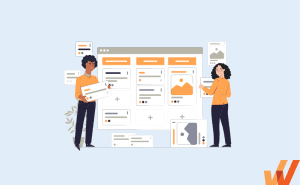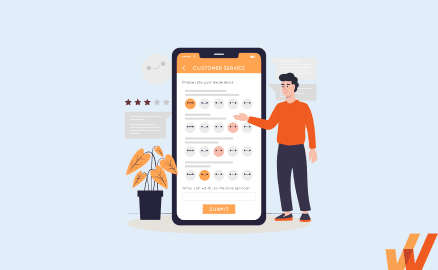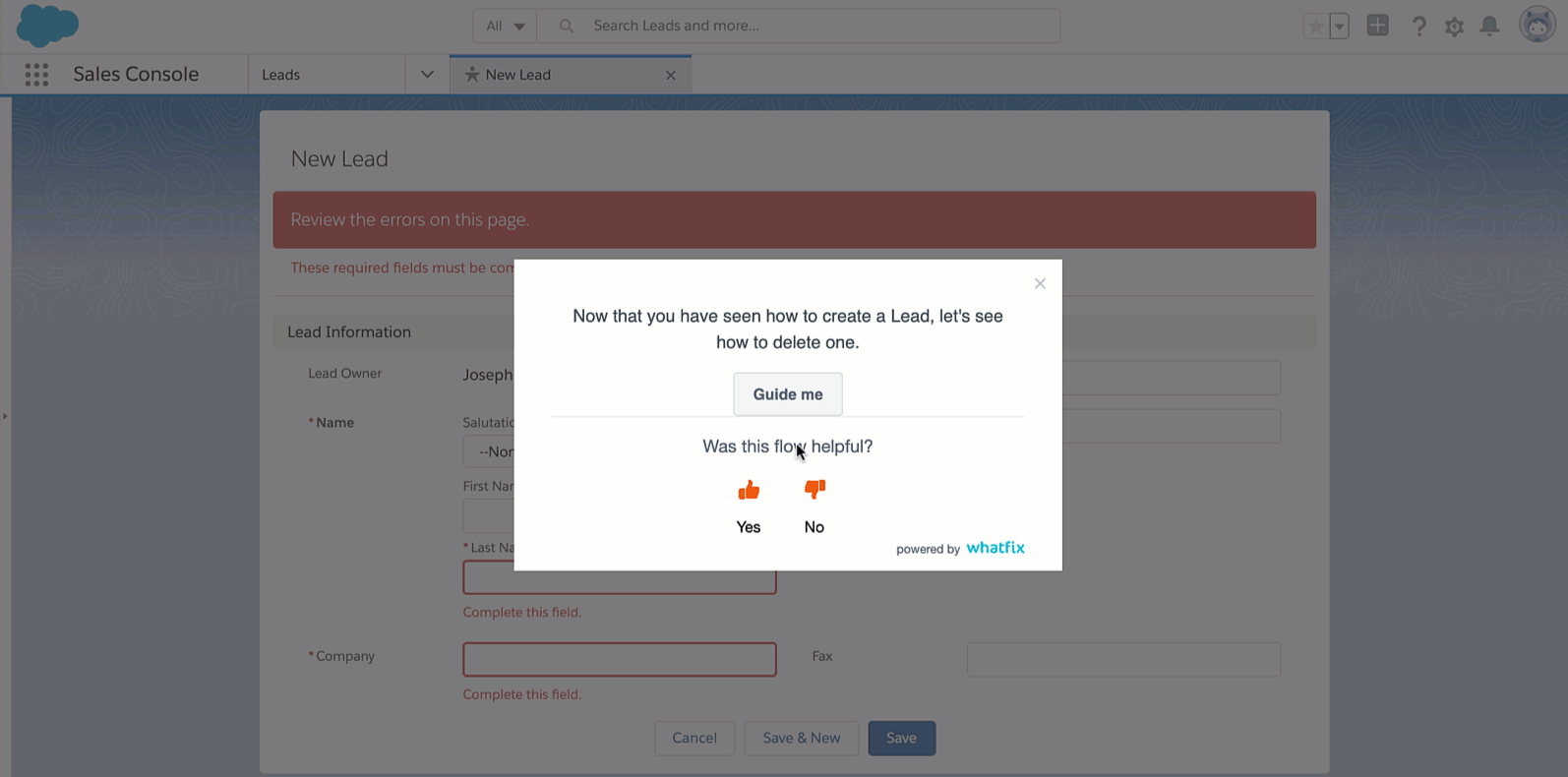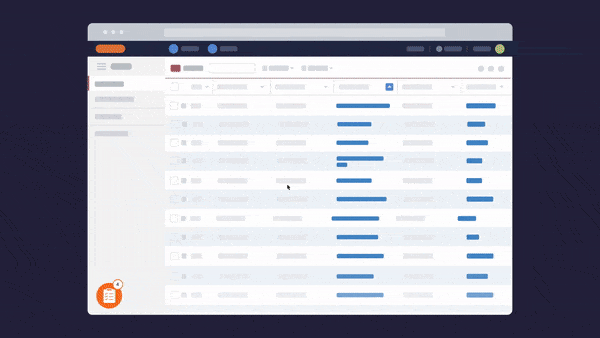

Andrew Dennis


Organizations often make assumptions about their products and services, and overestimate how satisfied their customers are.
This is highlighted in a Bain & Company report that found 80% of companies believed they delivered a “superior” customer experience. In reality, only 8% of customers agreed. The same report found that while 95% of high-level management teams claimed to be “customer-focused”, only 30% maintained customer feedback loops.
This satisfaction gap creates rifts between perception and reality and leads companies down the wrong paths, resulting in customer churn and misaligned products and services. The answer is often quite simple – simple surveys to collect customer feedback for gauging sentiment and satisfaction.
But what types of questions should you ask your customers?
In this article, we present examples of customer satisfaction survey questions to help companies collect actionable feedback that highlights needs, closes sentiment gaps, and bridges customer needs to product and service development.
A customer satisfaction survey enables companies to measure and understand customer sentiment toward products and services, as well as overall customer experience. Customer satisfaction surveys are crafted to gather detailed feedback that informs specific goals, such as evaluating customer preferences, identifying behavioral trends, creating user journeys, and analyzing the effectiveness of a particular solution. Surveys are delivered directly to customers through in-app pop-ups, chatbots, email campaigns, and other types of survey mediums.
Your customer survey questions will depend on your product or service, the survey medium you’re prompting users with – for example, in-app survey questions – and more. However, there are default, straightforward survey questions you can tweak for your contextual customer sentiment feedback survey.
We’ve curated a list of common customer sentiment survey questions across buckets of categories, including:
Customer satisfaction surveys may only need a few straightforward questions, while more complex products or questions require longer qualitative responses to gather actionable feedback.
You could also opt for brief surveys at specific parts of your customer journey and more comprehensive product feedback surveys during others. These stark differences are influenced by factors such as the behavior or preferences of your target audience, the type of product or service you’re delivering, or the kind of insights you want to explore.
Let’s explore a few different types of customer satisfaction surveys that you can start building today:
Companies who want to collect quantitative data or analyze apparent trends can use multiple-choice questions to collect standardized feedback efficiently. These surveys require respondents to choose from several pre-determined responses.
For example, you can drill down on your customer experience for a specific transaction or determine a feature in your product or service that customers like best. Surveys with multiple-choice questions are a good fit if you’re looking for concise feedback that you can interpret quickly and at scale.
You can use it to capture pre- and post-purchase satisfaction, demographic information, or customer requests for future product developments.
Unlike multiple-choice questions, open-ended questions help companies collect feedback on factors that cannot simply be bucketed into a few pre-determined choices. These questions require customers to share their unique opinions and experiences with more detail or context. Instead of capturing obvious trends and patterns, these questions are useful for helping companies understand customer sentiment and perception.
Open-ended responses are much more difficult to analyze, especially at scale. Still, they equip teams with rich information that is sometimes necessary to inform strategic discussion and product explorations.
These survey questions measure a specific range of agreement, satisfaction, or likeliness. For example, you can use a Likert scale to see how likely customers will recommend your product to their peers.
The response to this question would include a scale of text or numbers depicting the intensity of your customer’s likeliness — from ‘Very likely’ to “Very unlikely,’ for instance. This question type is most commonly used to measure customers’ attitudes or sentiments about your brand, such as the Net Promoter Score (NPS) survey analyzes how likely a customer will recommend a product or service to others.
You can also use a Likert scale to capture how customers rate a particular product or experience, how often they use a feature, how satisfied they are with product or service quality, or how likely they are to use your product again.

As the name implies, these questions require customers to select only one response between two options. A single-choice question commonly prompts customers to select between yes and no or true and false.
These questions can be answered promptly, so they’re suitable for simple surveys that quickly gather real-time customer feedback about specific interactions or transactions. For example, you can use this question to identify if customers found it easy to complete an action or found a customer service resource helpful.

It’s virtually impossible to track and measure customer satisfaction across different factors without collecting direct feedback. Implementing customer satisfaction surveys at specific milestones in the user journey can help you prevent bottlenecks and anticipate challenges.
This proactive approach to customer engagement provides organizations benefits such as:
Customer satisfaction surveys give businesses direct insight into what customers want. Your organization can identify pain points to prevent customer churn. These surveys also allow you to proactively spot trends that you can turn into opportunities for increasing customer engagement, improving service quality, and ultimately attracting and retaining customers by building trust in your brand.
Equipping yourself with deep visibility into customer sentiment and satisfaction helps you prioritize projects and initiatives that impact your bottom line, whether by driving more sales pipeline, expanding opportunities with existing customers, or strengthening your product or service lines through strategic partnerships. Not to mention, good survey responses serve as great proof points to leverage as you build these relationships.
From strong customer service to corporate social responsibility, incentives, and technology availability, customer loyalty is born out of holistic brand experiences that cover all bases. For example, strong value alignment with a brand isn’t enough to result in returning customers if a poor experience on a mobile application or website inhibits them from exploring products while they’re on the go. With so many factors to consider when managing customer expectations, customer satisfaction surveys give businesses a clear avenue to gather feedback regularly. Product or customer-facing teams can capture and document complaints, wins, or ideas businesses can use to inform and implement more customer-driven strategies.
You can’t improve what you aren’t measuring. You can gain a holistic view of your business by combining quantitative product data from product analytics software and end-user behavioral tools with qualitative data from customer satisfaction surveys.
You can also deploy targeted surveys to supplement your analysis on specific product paths, website experiments, customer journeys, or workflows. This feedback is crucial in giving you realistic and contextual information from end-users that you can use to improve existing procedures — technical processes in your product, internal collaboration, or back-end and front-end operations.
With Whatfix’s digital adoption platform (DAP), you can create a customer feedback loop with its in-app surveys and end-user behavioral event tracking to understand where customers are experiencing friction and frustration with your products, digital processes, and services.

Collect in-app feedback with native surveys, create contextual user onboarding experiences, drive feature adoption, and provide self-help support with Whatfix
Whatfix is a digital adoption platform that enables product managers with a no-code platform to create and launch in-app feedback surveys, product tours, user onboarding checklists, interactive flows, announcements, hotspots, tooltips, self-help wikis, and more – all without engineering dependencies. Analyze your product usage to identify friction areas, understand engagement, and build user cohorts.
Whatfix also enables organizations to close that feedback loop by making data-driven product decisions based on those qualitative insights and quantitative data to create and launch in-app guidance and contextual support experiences at the moment of need, directly inside their app or website UI.
For example, imagine your customers are experiencing a high drop-off rate after converting to your paid subscription. You hypothesize that they’re not experiencing early value, and are churning – but you’re not exactly sure where this user friction is occurring.
Between Whatfix’s Analytics and in-app Surveys, you can collect qualitative customer feedback, as well as quantitative feedback for your dropoff points by exploring customer segments and your journeys.
With Whatfix’s Visual Editor, you can create contextual product tours for different end-user segments. Each can include an in-app Task List that provides these new users with specific action items to complete upon signing up for your product – again, each contextual to different types of personas or end-users.

Each Task List action item can prompt an in-app Flow that provides step-by-step instructions on how to accomplish a workflow – reducing time-to-proficiency for new end-users by guiding them to their “aha!” moment.

Customer satisfaction surveys allow you to access rich data on how customers interact with your product regularly. Depending on the scope of your survey, you can use your survey questions to narrow down on specific behaviors, actions, preferences, and more.
Analyzing this data set regularly keeps you on the pulse of customer trends and helps you familiarize yourself with your ideal customer persona. You can use customer surveys to enhance your competitive intelligence and adapt your product to market shifts and evolving customer cultures. You’ll also be better positioned to identify patterns or irregularities in customer behavior that can lead to growth opportunities and business risks.
Gathering feedback from your product and customer teams or your executives isn’t enough to validate significant decisions about a product or service. Ultimately, the most critical voices belong to your customers – they’re using your product or service, after all.
Instead of assembling a focus group or conducting one-on-one interviews with target customers, you can build and deploy a customer satisfaction survey in minutes to get direct feedback from a larger volume of customers. This helps businesses align themselves with customer expectations without delaying project timelines.
With the right technology, you can increase your response rate from specific customer segments by implementing in-app surveys at high-impact points in the customer journey.
For example, online gaming app PlayOJO used Whatfix’s DAP to target specific segments of their gaming community with contextual promotions to increase user engagement and improve retention rates – creating in-app messages and prompts at specific times in the user journey that nudged customers to continue playing.
A customer survey can serve many purposes — from calculating your NPS score to modeling customer retention and measuring customer effort scores. Regardless of what customer survey you’re building or the types of questions you’re using to collect feedback, you’ll want to keep the following framework in mind:
Whatfix helps companies build and deliver in-app customer satisfaction surveys at impactful, strategic points in the customer journey. With Whatfix’s digital adoption platform (DAP), teams can collect qualitative and quantitative feedback with in-app Surveys and Analytics that collect end-user behavioral data and track custom events.
Empowered with this data, companies can overcome areas of user friction and create frictionless customer journeys that drive end-user adoption with in-app guidance and contextual support. With Whatfix, you can create contextual, segmented in-app widgets that overlay your UI including:
Whatfix is a comprehensive platform to analyze products and user behavior, create in-app guidance to overcome areas of friction, and engage end-users with contextual help.

Thank you for subscribing!